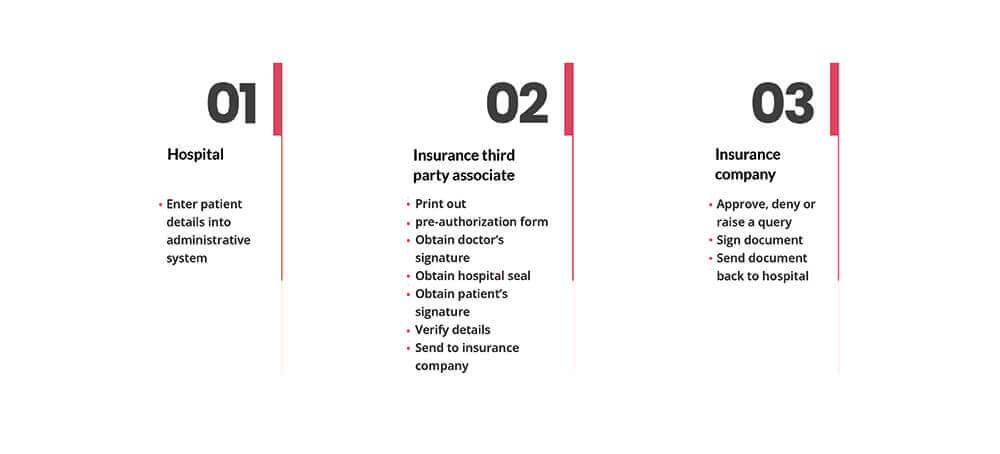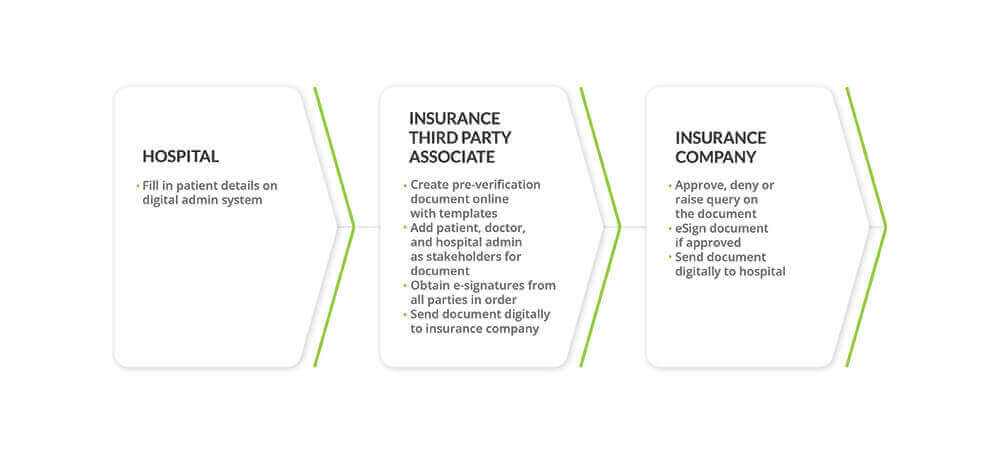A Day At The Doctor’s
Nearly all of us have shared the hurried experience of visiting a hospital for a check-up; here’s how it usually goes – You book an appointment, days in advance, and arrive early at the out-patient department, you wait for an absurdly long time and are called into the physician’s office nearly half an hour after your scheduled appointment time, your consultation lasts an entire two minutes, and you’re immediately shuttled off to the in-hospital pharmacy to purchase the prescribed medications.
At the end of the day, you end up spending several hours of your time for a mere minutes-long consultation. This begs the question – What are doctors doing with their time that they can only spend a few minutes on patients?
Hospital overcrowding is definitely a factor, especially in India, but the problem cuts deeper than this.
Hospitals And Their Paperwork Problem
The healthcare industry is (unsurprisingly) heavily regulated. This means that healthcare providers, especially primary care physicians, must to complete massive amounts of documentation per day to comply with hospital regulations.
How much paperwork, you ask?
According to surveys conducted by the Medscape Physician Compensation Report 2018, a third of physicians spend more than 20 hours per week on paperwork and administrative tasks, and nearly 70% of physicians spend 10 hours or more per week on these tasks.
The effects of all this medical documentation are far-ranging. Reports estimate that medical paperwork costs nearly $ 812 billion annually and accounts for more than a third of the costs of doctor visits.
Doctors are also burning out at unprecedented rates due to the pressure of completing paperwork on time. According to the Washington Post, nearly half of all doctors exhibit burn-out symptoms, and the number of doctors experiencing these symptoms has jumped by nearly 40% in the last four years.
All of these factors – strict compliance requirements, huge amounts of paperwork, and overcrowded hospitals; contribute to the untenable conditions of hospital staff in the present day.
Clearly, this requires some fixing but first, we’ve got to pinpoint where the problem lies exactly.
The State Of Medical Document Verification Today
A doctor treating a patient has to procure, sign, and obtain signatures on several forms and documents, including:
- Consent forms
- Certificates from attending practitioners
- Cash memos
- Surgeon certificate
- Test reports
- Insurance pre-authorization forms
Nearly all of these documents are printed on paper and signed with wet signatures, leading to long turnaround time and massive amounts of money spent on documentation.
The situation is further complicated when insurers are factored in.
Here’s an image of how the insurance claims process goes for a doctor and insurance associates.

Every single activity here conducted by insurance associates is a pain point and costs all parties involved both time and money.
With doctors the world over spending the majority of their time dealing with insurance-related documents and other administrative tasks, we can confidently say that fixing the problem of manual documentation will go a long way in helping doctors do their jobs effectively, and in turn, provide better care to their patients.
So how can the problem of hospital paperwork be fixed?
Since paper is the problem, the most natural fix is of, course, to remove all traces of paper by digitizing patient-related documents using digital documents and document templates. The need for signatures on documents can also be addressed via e-signatures
To put it succinctly, what hospitals need to digitize the right way, are –
- E-signatures with an eSign workflow
- Digital documents with templates and a virtual paper trail
These seemingly simple solutions completely alter the documentation workflow of hospitals for the better.
Here’s what an insurance claim will look like after a hospital has digitized its documentation.

This workflow is much faster, less frustrating, and costs significantly less than the traditional paper-based method of healthcare documentation.
Additionally, with most of the insurance industry using Aadhaar eSign for document execution, it’s time for healthcare institutions to step up and digitize their documentation.
The advantages of such a digital documentation system are numerous; here’s how a hospital can benefit from adopting medical document verification –
- Faster insurance processing time
- Increased transparency for patients
- Increased employee efficiency and lowered TAT on insurance claims
- Real-time document tracking to ensure accountability
- Document execution from anywhere at any time
- Less time spent on documentation for physicians
- Data security for sensitive patient information and lowered risk of insurance fraud
- Legal non-repudiation due to virtual paper trail
Therefore, adopting a medical verification system with an eSign workflow can prove to be real game-changers for hospitals.
Now that the benefits of medical document verification have been established, which provider of documentation solutions is best for your hospital?
As we’ve seen above, a hospital will need a documentation system with a flexible eSign workflow, options for multiple signatories, and legally valid templates in order to experience all the benefits of digitization.
It would be even better if the service provider offering these facilities was also trusted by several other businesses and the recipient of multiple awards.
SignDesk ticks every single one of these boxes.
Our eSign workflow solution is in use by 350+ clients, including several major banks, all of whom have experienced a 99% decrease in TAT and a 20% increase in efficiency thanks to our solutions.
We offer:
- Legally valid document templates
- E-signatures supporting both Aadhaar eSign and digital signatures
- Options to add multiple signers
- Options to impose a signing sequence
- Industry-grade client data security
- Approval workflow on documents
Our eSign solution is trusted and practically guaranteed to save doctors time and healthcare institutions money.
Curious to learn more? Book a demo with us now!